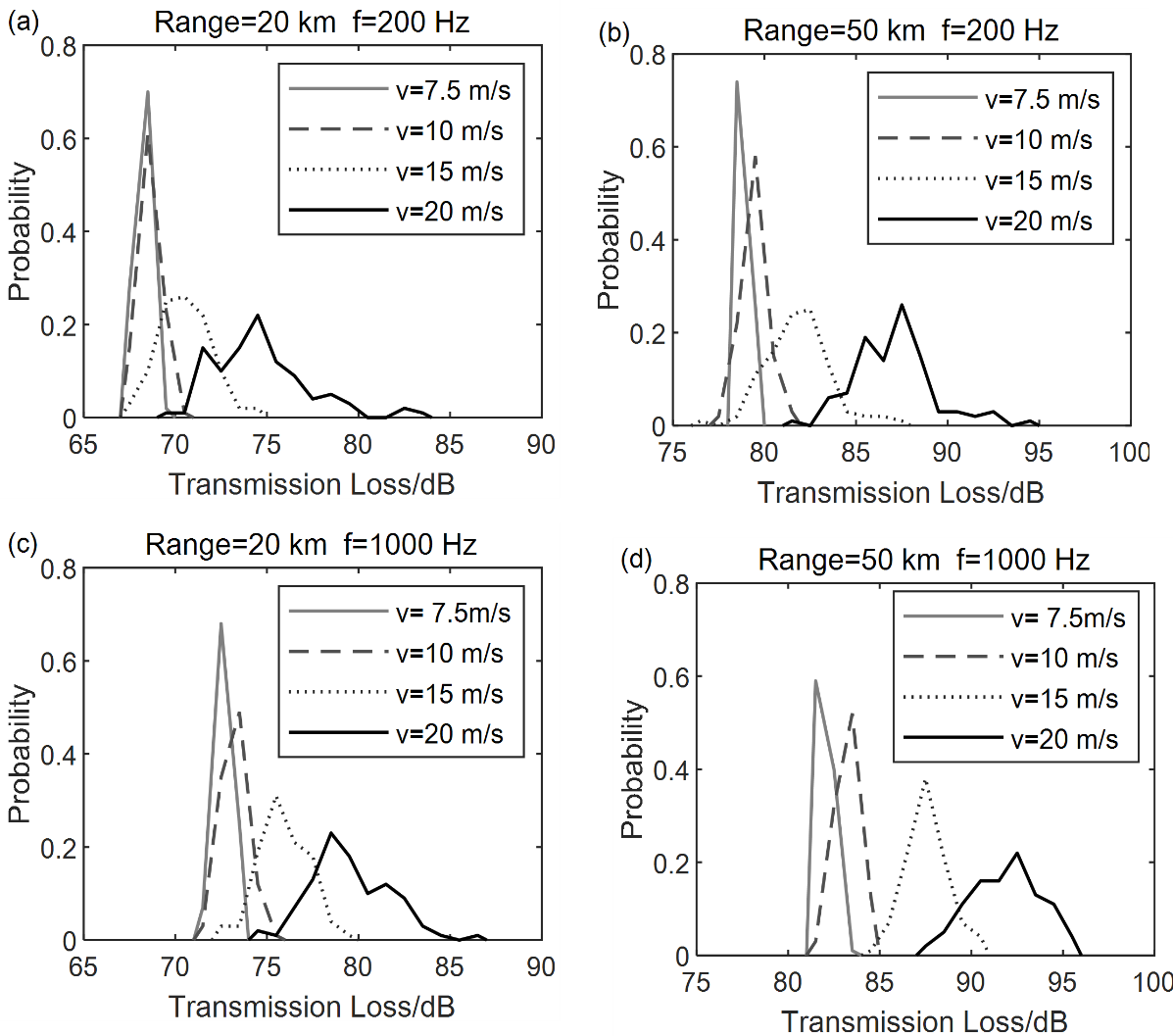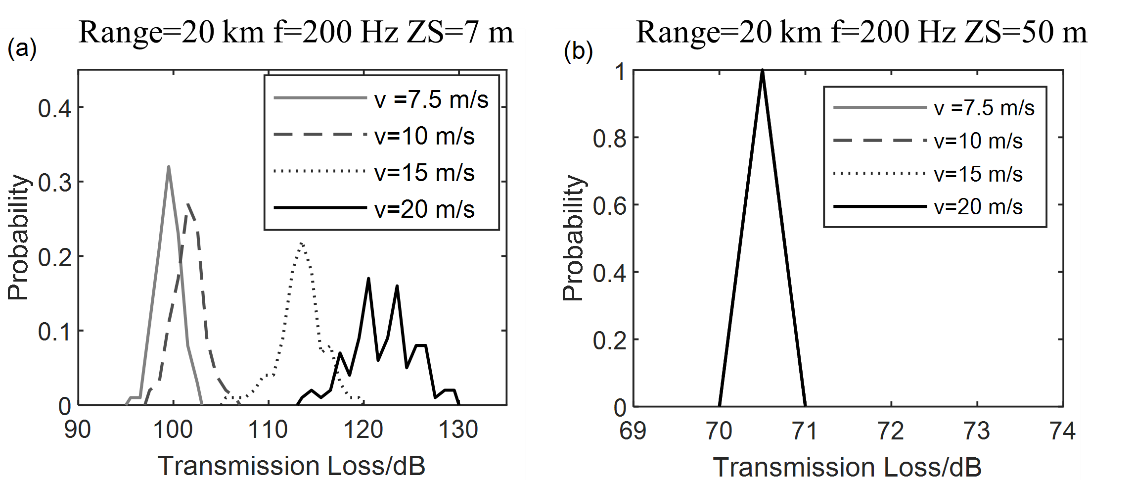Sound propagation is determined by boundary conditions to some extent. Diffuse reflection from the rough sea surface results in the sound ray stochastically scattering to disparate directions besides the specular reflection direction, leading to the attenuation and fluctuation of the acoustic pressure at the receiver, especially in the shallow water. As a result, the prediction of sound propagation affects the underwater acoustic applications and researches significantly. Therefore, it is quite important to investigate how the randomly fluctuating surface affects sound propagation in the shallow water.
In the past few years, researchers have investigated in the increase of the Transmission Loss (TL) caused by the rough surface, but ignored discussing the fluctuation of the TL.
Recently, Master LIU Ruoyun and Prof. LI Zhenglin from the Institute of Acoustics (IOA) of the Chinese Academy of Sciences discussed the statistic characters of the fluctuating TLs caused by the rough surface of low frequencies in the shallow water environment. The study was published in Chinese Physics B.
Researchers utilized a one-dimension wind-wave spectrum, Monterey–Miami parabolic equation (MMPE) model, Monte Carlo method, and parallel computing technology to simulate the fluctuating sound field under the rough surfaces, and then calculated the probability distribution of the TLs.
In an isothermal environment, the TLs of each site randomly distribute in an interval, while the TL of the peak probability is approximately at the center of the interval (Fig 1). As the wind speed rises, the magnitude and dispersion degree of the TLs increases accordingly. The magnitude increase of the TLs with the wind speed rising is more significant for higher-frequency case and for larger-range case. (Fig 2)

Figure 1. Probability of TL under rough surfaces (frequency f = 200 Hz, wind speed v = 20 m/s, and the receiver depth ZR =10 m). (Image by IOA)

Figure 2. Probability of TL at different frequencies and different ranges (the receiver depth ZR =10 m). (Image by IOA)
While the results are quite disparate in the shallow water environment with a negative thermocline (Fig 3a). For source above the thermocline, the distribution of the TLs is quite dispersive. As the wind speed rises, the TLs are greater and more dispersive. The reflection angles of the sound rays increase after the reflection of the rough surface, leading to a larger bottom loss and some rays unable to reach the receiver (Fig 4a).
For source below the thermocline, the TL concentratively varies within an interval of 1 dB for all wind speeds (Fig 3b) and is rarely affected by the rough surface. The phenomenon is due to the sound rays mainly consisting of refracted bottom-reflected (RBR) rays without the interaction with the surface (Fig 4b).

Figure 3. Probability of TL Probability for different source depths (the receiver depth ZR =70 m). (Image by IOA)

Figure 4. Sound rays for different source depths. (Image by IOA)
The research implied that sound field under the rough sea surface is related to the wind speed, frequency, range and sound speed profile, and explained the reasons. Besides, a reliable and rapid approach was introduced to evaluate the variation of the TL under different wind-wave conditions.
The regulations and the approach discussed above is expected to be helpful for other underwater acoustic studies, such as sound field fluctuation under the circumstance of internal waves.
The research was supported by the National Natural Science Foundation of China (Grant Nos. 11434012, 11874061, and 41561144006).
Reference:
LIU Ruoyun, LI Zhenglin. Effects of rough surface on sound propagation in shallow water. Chinese Physics B ( Epub 2018 December 12). DOI: 10.1088/1674-1056/28/1/014302
Contact:
ZHOU Wenjia
Institute of Acoustics, Chinese Academy of Sciences, 100190 Beijing, China
E-mail: media@mail.ioa.ac.cn